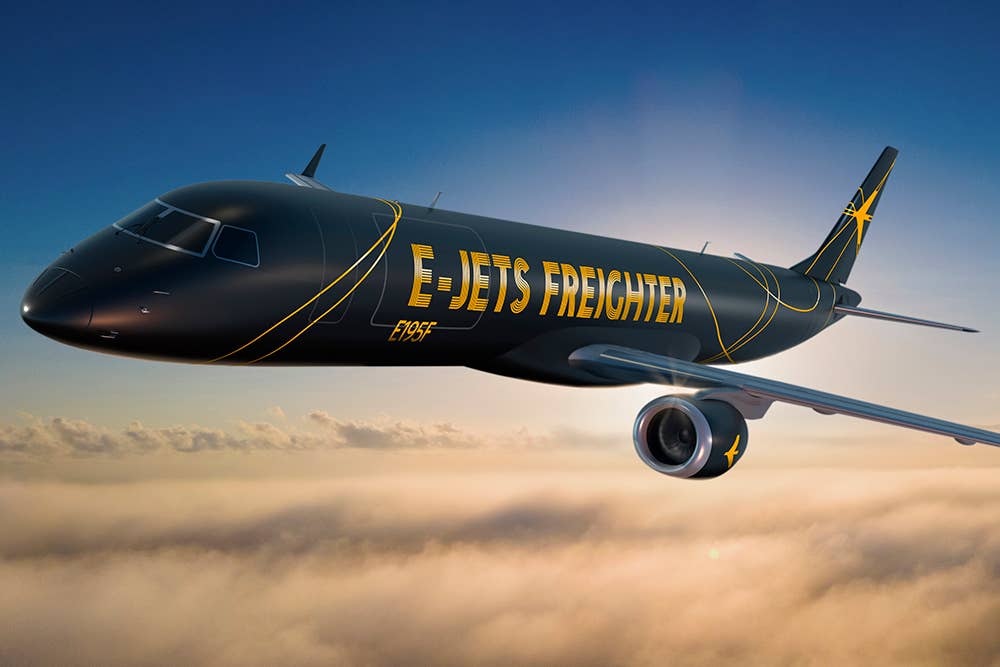
The deal follows a lease agreement in May with Nordic Aviation Capital (NAC) for up to 10 conversion slots for E190F/E195F. [Courtesy: Embraer]
Airplane manufacturer Embraer (NYSE: ERJ) announced that it signed its first contract with an undisclosed customer for 10 of its Embraer E-Jets Passenger to Freight (P2F) conversion aircraft, a model announced by CEO Francisco Gomes Neto during the company's first quarter earnings call in April.
The deal follows a lease agreement in May with Nordic Aviation Capital (NAC) for up to 10 conversion slots for E190F/E195F.
#NEWS | #Embraer Signs a Firm Contract for up to 10 Passenger to Freight Conversions. Learn more: https://t.co/w8YGgCGGAp #EmbraerStories #WeAreEmbraer pic.twitter.com/RSZJFUK69a
— Embraer (@embraer) June 24, 2022
Embraer says its E-Jets Freighters offer more than 50 percent more volume capacity, three times the range of large cargo turboprops, and up to 30 percent lower operating costs than narrow-body aircraft. When Embraer launched the P2F option, the company said the layouts were to fill the market gap between turboprops and larger narrowbody cargo aircraft, providing an option that falls between the smaller ATR 72-600 and the larger Boeing 737-300SF. Embraer has delivered more than 1,600 E-Jets globally, which means P2F customers will benefit from an established service network and product support.
How the Mods Will Be Completed
For this order, aircraft for conversion will come from the customer’s current E-Jets fleet with deliveries expected in the beginning of 2024. Embraer will complete the modifications at its facilities in Brazil. Embraer will make the following tweaks to convert the jets to fit cargo:
- main deck front cargo door
- cargo handling system
- floor reinforcement
- rigid cargo barrier (RCB)–with access door
- cargo smoke detection system
- air management system changes (cooling, pressurization.)
- interior removal and provisions for hazardous material transportation
When complete, the combination of under-floor bulk cargo and main deck cargo will allow freighters to handle a payload of 23,600 pounds for the E190F and 27,100 pounds for the E195F. Moreover, the E195F has a similar range as the 737SF—roughly 2,500 nm—but burns less fuel, generates fewer emissions, and has lower maintenance and cash operating costs.

Sign-up for newsletters & special offers!
Get the latest FLYING stories & special offers delivered directly to your inbox






